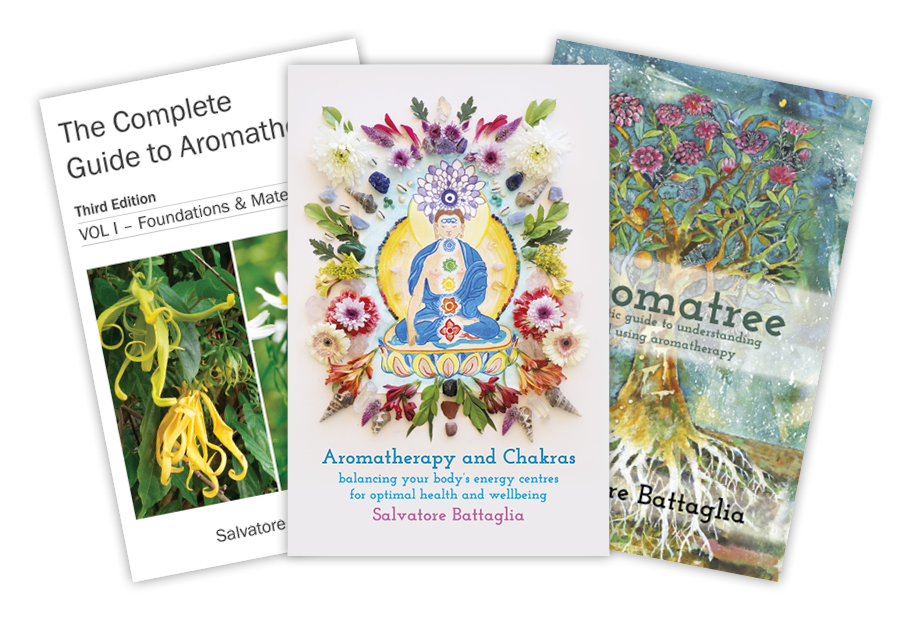The challenges in learning to smell like a professional
The challenge has always been to come up with a uniform, structured approach to describing smell; especially in occupations where smell is very important. The most obvious is as a perfumer, but just think about those involved in food flavouring, wine or beer making, or roasting coffee – all of these occupations require a good sense of smell with a very objective perspective.
One of the books that I have enjoyed reading is Learning to Smell by Donald Wilson and Richard Stevenson. Written by a neurobiologist and a psychologist, this book gives us an in-depth discussion on the latest theories of olfactory perception. I love the fact that they also challenge the traditionally held belief that olfactory perception is a simple physiochemical process. They suggest that it is a very plastic process that is strongly tied to memory and cultural experiences.
Yes – this does make for some very interesting challenges when we are objectively trying to describe smell.
The organoleptic ‘odour’ test is the most important control criteria for testing the quality of essential oils. It is the test to which all essential oils are subjected. While it is a very subjective test, through careful sensory analysis it is possible to gain much information about the sensory properties and qualities of the essential oils.
In preparation for developing a more structured approach to smelling, it is important that we become familiar with some important concepts.
Becoming open and receptive
The sense of smell is the sense of imagination. – Jean-Jacques Rousseau
Scent is like music to the sense of smell; evoking emotions, memories and imagery. Being the most abstract of the senses, you are often lost for words when you try to describe a particular scent. At best, you might compare it with other scents, or describe it with a feeling or mood.
The mute language of fragrance may summon up an elusive deja vu sensation – ‘It reminds me of something, but I just can’t think what.’
It may often be more precise, reminding you of first love or a childhood visit to a well-loved grandmother who smelled of lavender. Part of the training of perfumers is to build picture-bridges, the ability to associate images and feelings with fragrances. For example:
- patchouli = oriental market
- sandalwood = spiritual and meditative
- jasmine = sensuous and erotic
This ability to associate fragrances, recall them and rearrange them in the mind is considered the true talent of the perfumer. The nose is simply the instrument for the job.
How do we measure our emotional responses to odour?
The following are some examples of the way we may describe our response to any aroma:
- pleasant – made you feel happy, sense of well-being, positive memories
- sensual – romantic, feelings of love and desire, pleasure
- unpleasant – overpowering, disgusted, irritable, negative memories
- relaxed – serene, calm
- refreshed – energised, invigorated, clean
This is similar to the Japanese practice of listening to, rather than smelling incense – The art of koh-do.
In a traditional koh-do ceremony, noblemen, warriors, sages and priests would gather together to listen to incense with ‘ears of the spirits’. Incense burners containing wood chips of three different kinds of aromatic woods would be passed around, with the kind of wood labelled on them. The participants then commented on and memorised the characteristics of each.
Then one kind of wood chip was chosen and that incense burner passed around again, but this time the name was hidden and the participants had to guess what the fragrance was.
We can apply the principles of koh-do to the sensory appreciation of essential oils. We can learn to ‘listen’ to their scent. We can make it a social activity by sharing our experiences with like-minded individuals.
Rhind quotes Lawless who compares the experience of smelling with ‘awareness and enquiry’ with the ‘just sitting’ method of meditation. Lawless explains that this method is a practice of body awareness known as shikantaza, which is attributed to the Zen master Dogen. He explains that in order to still the mind awareness is deliberately shifted to the body, which must always be present, unlike our thoughts. With practice, our mind and body become one.1
When we fully engage with scent and it becomes our focus, we can find ourselves experiencing a state of mindfulness and reflective awareness.
I agree with Aftel who says that there is a new-found interest in scent. She says that she wants to educate people and give them a new nose – to introduce them to the heady sensuality of a fully engaged sense of smell: 2
I want them to reawaken to smell, the way they have begun to reawaken to taste after a decade-long slumber. Often the path to awakening scent comes through taste, its closer sibling among senses. In fact, “taste” is really a product of two senses – the sensation of taste on the tongue plus the smell in the nose – so the reawakening to food has really been in part a reawakening to smell.
Aftel states that we don’t need to analyse scent. We should just let it unfold in us:2
Aspects of an aroma strike us, then fade away as other notes emerge and gradually disappear. Like music, smell is an evolving experience, always in motion; the nuances of an aromatic note are experienced in transition from one to another. And as with music, the intangibility of scent allows us to experience it in a state of dreaming imagination.
We must first learn how to smell!
If we are going to truly master the art of blending natural essential oils for perfumery, we must first learn how to smell. I mean smell like an artist!
In her book, Fragrant – the secret life of scent, Aftel gives us some excellent advice on how we should smell:2
Imagine taking the first sip of a fine wine or listening to beautiful music; most of us begin almost instinctively by closing our eyes to shut visual distractions. Approach smells the same way. Close your eyes and eliminate or minimise other stimulations, too – give yourself a quiet, spacious, uncluttered place to smell, free of competing odors. Bring a concentrated focus to bear on the aromatic sensation that you are receiving. This should not be done absentmindedly or passively.
She states it is important to push aside simple dichotomous reactions such as – Yes, I like this or No I don’t. She also explains that we must appreciate the scent as something that is alive, vibrant, nuanced and unique. She asks us to allow our instinctive affinities to surface.2
We have an innate feeling for natural aromas; they take us back to a primordial state in which we recognise the shape, texture and the evolution of a scent.
She asks us to notice:2
- the layers of smell (one dimensional or complex and layered)
- the shape of the smell (pointed, sharp, rounded or dull)
- the memories it conjures
- the feelings it arouses
It is so important to understand the language that is used to describe scent. There have been some excellent articles written which help us develop meaningful odour maps. Most of the odour maps that have been developed in perfumery also include synthetic aromas.
I would suggest reviewing the odour type and odour characteristic descriptions provided in Chapter 5 of The Complete Guide to Aromatherapy. These terms are important for describing the organoleptic characteristics of essential oils.
For example, the scent of bergamot is described as follows:
A warm, fruity-sweet aroma and a fresh citrus note. This is followed by an oily-herbaceous and somewhat balsamic body and dryout. The colour of the oil fades on aging, particularly when the oil is exposed to light.3
In the third edition of The Complete Guide to Aromatherapy, I have updated all the organoleptic descriptions of each essential oil. I suggest that you spend time analysing the individual essential oils and cross-referencing the scent as it unfolds with the description provided.
Developing a personal fragrant language
Gill Farrer-Halls, author of The Spirit of Aromatherapy, explains that you may often not have any connection with the odour descriptions assigned to essentials oils. She suggests coming up with a personalised vocabulary to help you deepen your appreciation and understanding of essential oils.4
To develop your own personal fragrant language, take an essential oil that you know and like. Smell and appreciate the scent, while reading the description of the scent in the various aromatherapy books. Then smell the scent of the oil again, this time with pen and paper in hand. Write down any words or phrases that come to mind, focusing on those words with personal meaning and have resonance with you. You may use the same words used to describe the aroma in the aromatherapy book, but also observe new words as they surface in your mind that you feel when you describe the fragrance. If your mind goes blank, smell the oil again and remind yourself of its perfume. Then repeat the experiment several times over the days and weeks after your first attempt.4
Gill Farrer-Halls then suggests that you repeat this with more oils. You will find that your language becomes more complex and more evocative. Developing your own vocabulary to describe the aroma of essential oils may add another dimension to how you choose to use and blend essential oils. To help you get started she provides us with an A-Z of words to help you develop your own fragrant vocabulary.4
A – Alluring, amber, animalistic, anise-like, aromatic
B – Balanced, balsamic, bitter, bittersweet, bright
C – Calming, camphoraceous, chypre, citrus, clarifying, clean, clear, clove-like, comforting, confident, cooling
D – Delicate, dry
E – Earthy, energetic, enlightening, enlivening, erotic, euphoric, evocative, exhilarating, exotic
F – Feminine, fiery, floral, fortifying, fresh, fruity
G – Gentle, grassy, green
H – Harmonious, hay-like, heady, heavy, herbaceous, herbal, honey-like, hypnotic
I – Incense-like, intense, invigorating, inviting
L – Leafy, lemony, light, lingering, liquorice-like, lively, loud, luxurious
M – Masculine, medicinal, mellow, minty, mossy, musky, mysterious
N – Narcotic, nutty
O – Opulent, oriental
P – Passionate, peaceful, penetrating, peppery, persistent, pervasive, powerful, profound, provocative, pungent
R – Radiant, resinous, responsive, rich, rosy
S – Sedative, seductive, sensual, sharp, smoky, soft, soothing, sour, spicy, spiritual, sporty, stimulating, strengthening, sultry, sweet
T – Tangy, tar-like, tea-like, tenacious, terpene-like
U – Uplifting
V – Vanilla, vibrant, violet-like, vivacious, volatile, voluptuous
W – Warm, woody
Y – Young, youthful
Personality
Another very important approach to creating a creative blend is to understand the personality or the character of the individual essential oils. In the third edition of The Complete Guide to Aromatherapy, I have updated all the personality profiles of the individual essential oils. I have also included the Myers Briggs Personality Type for most of the essential oils.
I often suggest that the blend be chosen to match the personality of the end user.
References
- Rhind JP. Listening to scent. Singing Dragon, London, 2014.
- Aftel M. Fragrant – the secret life of scent. Riverhead Books, New York, 2014.
- Battaglia S. The complete guide to aromatherapy. Third edn, Black Pepper Creative, Brisbane, 2018.
- Farrer-Halls G. The spirit in aromatherapy. Singing Dragon, London, 2014.
- Dowthwaite S. The grammar of perfumery. Perfumer & Flavorist. October 2004;29:76


